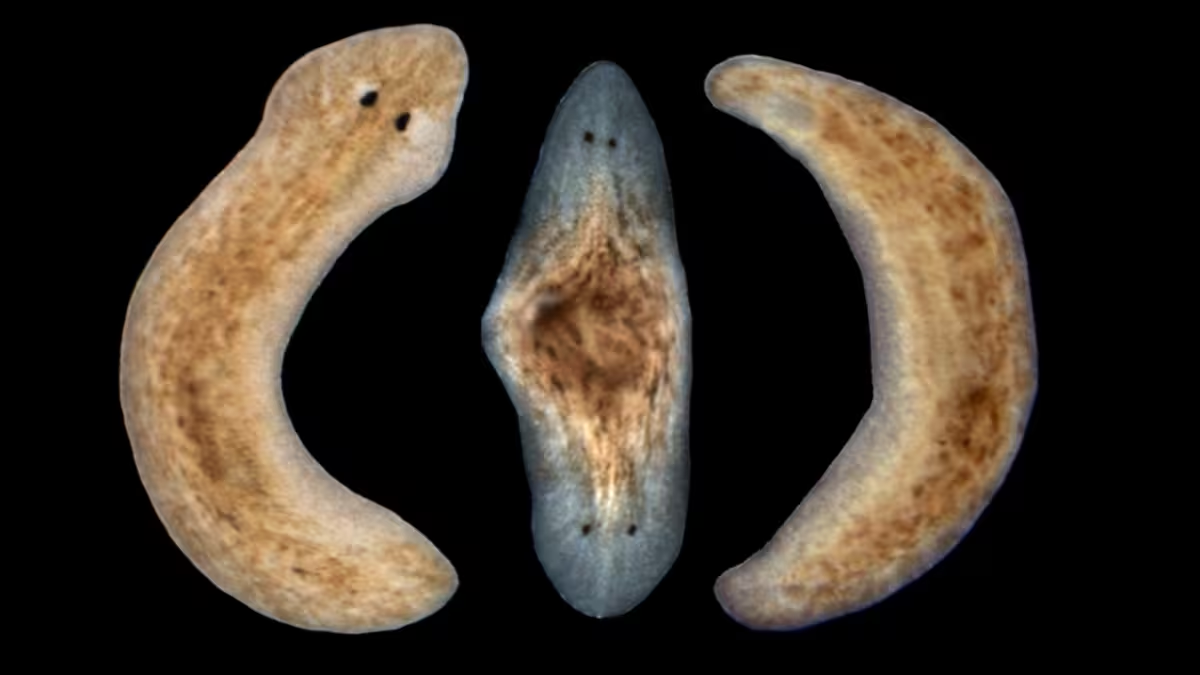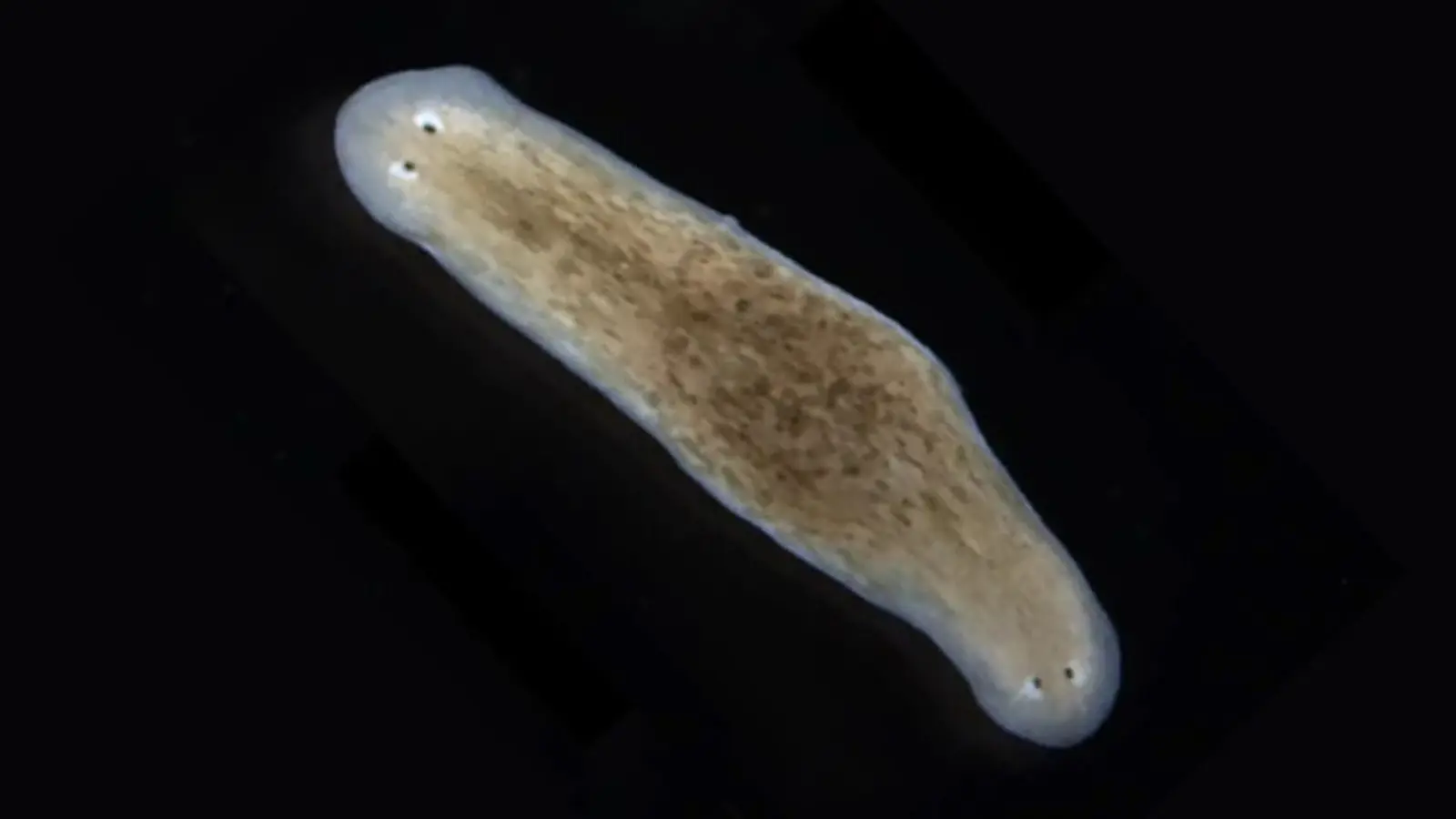5 Minutes
Flatworms are already regeneration superstars in biology labs — cut one in half and you often get two whole animals. Now, researchers studying Stenostomum brevipharyngium have reported a striking natural anomaly: individuals that develop heads at both ends, and whose descendants can reverse the orientation of their body axis. The discovery sheds light on plasticity in body patterning and raises fresh questions about how tissues remember orientation.
A surprising developmental twist in asexually reproducing worms
University of Warsaw zoologists Katarzyna Tratkiewicz and Ludwik Gąsiorowski documented naturally occurring two-headed individuals in a species that normally reproduces by budding: a clone forms from the parent’s midline and grows a head, then the rest of the body follows. In some rare cases, instead of a tail appearing at the new organism’s posterior, a second head formed.
That might sound like a lab trick — and it can be. Previous experiments have used bioelectric signals to intentionally coax flatworms into growing two heads or two tails. But this time, the two-headed morphology showed up spontaneously in the wild-type population, and when the scientists sliced the mutant worms into pieces, more surprises followed.
Regeneration that flips the body’s internal compass
When the two-headed worms were sectioned, each head regenerated a tail at the opposite end. Crucially, those newly formed tails included fully functional reproductive organs, meaning some descendants had effectively swapped the positions of head and tail relative to the animal’s original body axis. In practice, cells in the middle of these ‘upside-down’ worms carried a different axis orientation than cells at either end.
"Effectively, such regeneration allows stable reversal of the body axis polarity without impairment of the survival or reproductive abilities of the animal," the authors report in Proceedings of the Royal Society B. In other words, despite a dramatic rearrangement of anatomical polarity, the animals continued to feed, reproduce and maintain basic physiology.

How pluripotent stem cells may enable flexibility
The researchers propose that this extreme plasticity is possible because flatworms maintain a pool of pluripotent adult stem cells capable of generating any cell type during continuous tissue renewal. That pluripotency allows dynamic remodeling of organs and perhaps erases strict orientation markers when tissues are rebuilt during budding or after injury.
"The fact that the worms were able to resume normal physiology, despite reversal of those vital organ systems in relation to their heads, points towards extreme physiological flexibility of their body plan," Tratkiewicz and Gąsiorowski write, suggesting that either organ simplicity or active remodeling by stem cells — or both — permit such reversals.
Why this matters for regenerative biology
Scientists study flatworms because their regenerative abilities give insights into pattern formation, stem cell behavior and bioelectric signaling — all of which have potential translational relevance. Understanding how an organism can flip its internal axis and still operate normally challenges our assumptions about fixed body maps and may inform tissue-engineering strategies that require re-establishing orientation after injury.
From a basic-science perspective, the finding raises mechanistic questions: What molecular cues mark axis orientation in adult tissues? How are those cues maintained or reset during budding and regeneration? And what role do bioelectric fields play in stabilizing head-versus-tail identity over time?
Implications and future directions
Future experiments could map gene-expression patterns, track stem-cell lineages and manipulate bioelectric or biochemical signals during budding to see how and when axis information becomes fixed or reversible. Comparative work across flatworm species may reveal whether this flexibility is unique to Stenostomum brevipharyngium or more widespread among regeneration-competent invertebrates.
For now, the natural occurrence of two-headed flatworms and the ability of their descendants to invert body polarity offer a living demonstration that body plans can be far more malleable than they appear — a concept that could reshape how biologists think about developmental memory and tissue engineering.
Expert Insight
"These observations underline how surprisingly robust and flexible simple body plans can be," says Dr. Elena Morales, a regenerative biology researcher at the Institute for Integrative Biology (fictional). "If adult tissues can reset polarity without losing function, it suggests new ways we might coax mammalian tissues to reorganize after injury — but we must first understand the signals that allow orientation to be rewritten safely."
The study appears in Proceedings of the Royal Society B: Biological Sciences and joins a growing body of work using flatworms to probe the fundamentals of regeneration, axis specification and stem-cell-driven remodeling.
Source: sciencealert
Comments
DaNix
is this even real or a lab contamination? quick thought, how frequent are these mutants in wild populations and could bioelectric effects explain it? curious
labcore
Whoa, two-headed worms in nature? mind blown. If adult stem cells can flip axis and still function, that could rewrite regen ideas... but also kinda eerie lol


Leave a Comment